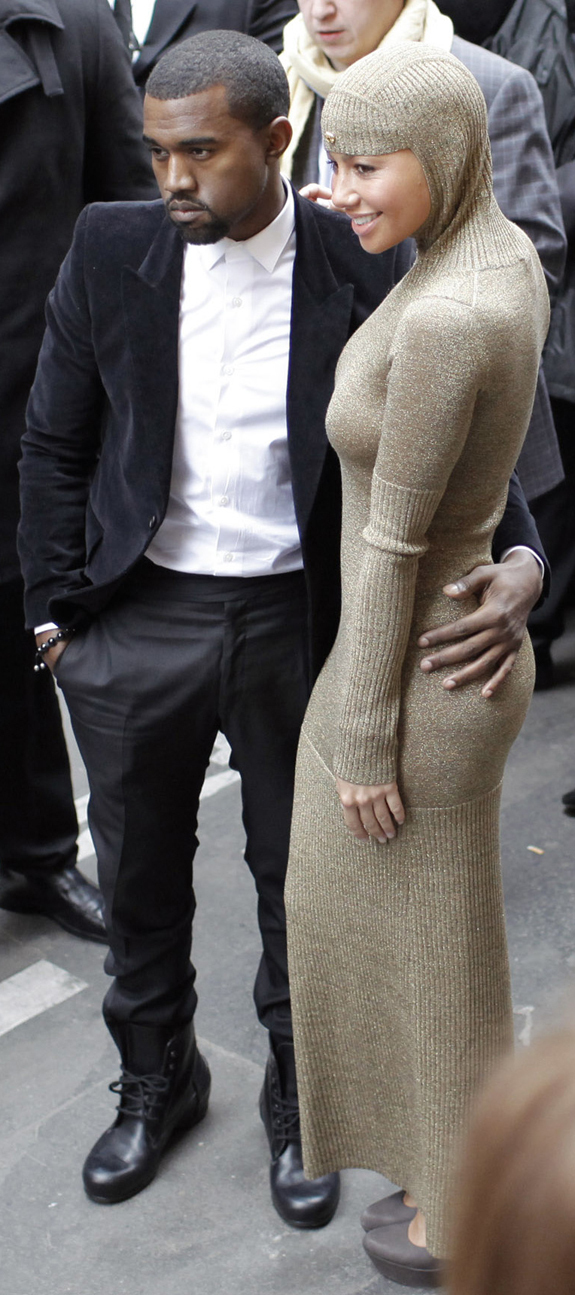An extraordinary series of articles recently appeared on the Nieman Watchdog Web site, anchored by investigative reporter John Hanrahan and mostly based on interviews with some of the nation's most perceptive, prescient and prophetic economists. The series laid out a broad landscape of economic issues that have been largely overlooked during the reporting of the nation's economic collapse -- to our great peril.
Hanrahan's articles explore key elements of the story that reporters should have been -- and should still be -- writing about. Among them: The endemic fraud at the heart of the collapse, the resultant need for a comprehensive dissection of some key financial institutions, how the wars in Iraq and Afghanistan have weakened the economy, the dramatic effects of the crash on domestic poverty and world poverty, and underlying it all, the critically important role of government spending in a recovery, be it through a second stimulus or expanded entitlements or jobs programs, all of which requires that deficits be seen, for the short run at least, as the solution, not the problem.
As a coda to Hanrahan's series, here is a list of seven things all of us should be more alarmed by than we currently are, going forward.
A common theme underlying them all is that while our leaders -- and the voices of conventional wisdom -- treat our current recession as cyclical in nature, and are essentially mostly just waiting around for growth to pick up again, there is plenty of reason to believe that this crisis was instead an expression of structural problems. And if that is so, and we don't take the proper action, then the wait could be a long one.
No. 1: The middle class may never be the same again
The full effects of the crash of 2007-2008 on the lives of regular Americans has yet to be fully appreciated. For most members of the middle class, their sense of financial well-being was largely based on the size of their 401(k)s and their equity as homeowners. After the collapse of stock prices and with the steep drop in home prices, many may never feel the same way again, or spend their money as confidently.
While 401(k)s have somewhat bounced back, about one in four homeowners now actually have negative equity -- are "underwater". A recent study by Barry P. Bosworth and Rosanna Smart for Brookings finds that American households lost $13 trillion in wealth between mid-2007 and March 2009, or about 15 percent in all. That decline badly hit baby boomers just as they're headed into retirement. And middle-income families whose head is age 50 or younger actually have smaller net incomes today than in 1983.
Meanwhile, many American families spent much of the last decade (or two) living beyond their means, piling up debt on their credit cards, or "bubble borrowing." Two University of Chicago researchers have found that the housing bubble hugely increased household consumption as homeowners borrowed on average $0.25 to $0.30 for every $1 increase on their home equity. Now that housing prices have crashed and credit is tight, the inevitable result, Atif Mian and Amir Sufi write somewhat euphemistically, is a "painful process of household de-leveraging."
Harvard Professor Elizabeth Warren, an emerging hero among progressives in her role as chair of the congressional bailout oversight panel, sees the latest series of blows as the unfortunate culmination of a crisis that started taking form a generation ago. For long stretches of time, the growth in the nation's GDP has gone almost entirely to the top 1% or less of the population. That has resulted in a dramatic shift in wealth away from the middle class, made the economy more vulnerable to disaster and made the toll of such a disaster more catastrophic to all but the wealthiest Americans. Warren writes:
America today has plenty of rich and super-rich. But it has far more families who did all the right things, but who still have no real security. Going to college and finding a good job no longer guarantee economic safety. Paying for a child's education and setting aside enough for a decent retirement have become distant dreams. Tens of millions of once-secure middle class families now live paycheck to paycheck, watching as their debts pile up and worrying about whether a pink slip or a bad diagnosis will send them hurtling over an economic cliff.
She concludes: "America without a strong middle class? Unthinkable, but the once-solid foundation is shaking."
No. 2: The recovery could take a really long time
Even assuming that we are at the beginning of an enduring recovery, there are many signs that it will be a slow one, and that it could be as long as a decade until most American families return to the standard of living they enjoyed before the crash.
Most notably, unemployment is widely expected to be astronomically high for at least another year or two -- remaining around 10 percent through 2010.
And the recovery, such as it is, has been largely fueled by government money -- not just the stimulus, but also the bailouts, targeted programs such as the homebuyers tax credit and "cash for clunkers," and emergency spending on such things as extended unemployment insurance. What happens, however, when those stop? And none are designed to go on forever.
Washington Post financial columnist Steven Pearlstein recently put it this way:
My best guess is that the current upswings in economic output, confidence and financial asset prices are largely a reflection of the extraordinary fiscal and monetary juice provided by Treasury and the Federal Reserve, along with the natural rebound that occurs after a collapse in consumer and business spending like that which occurred in the first half of 2009. The surprising strength of the bounce-back testifies to the wisdom of the underlying strengths of the U.S. economy and the success of the policies, but is likely to peter out as the stimulus begins to wear off and the inventory correction is completed.
No. 3: The recovery could only be temporary
In an interview with Fox News back in November, Obama himself raised the possibility that the economy could once again head into a tailspin:
I think it is important though to recognize that if we keep on adding to the debt, even in the midst of this recovery, that at some point, people could lose confidence in the US economy in a way that could actually lead to a double-dip recession.
This is the classic Wall-Street influenced worst-case scenario -- with government spending as the villain and interest rate increases as the ultimate horror, leading to doom.
But Obama may be worrying about the wrong side of the Wall Street/Main Street axis. The more likely reason the economy could tank again is because of insufficient demand.
For the past decade or so, the growth of the U.S. economy was primarily fueled by the credit and housing bubbles -- which now turn out to have been illusory. So what will spur growth this time? Especially with so many Americans out of work? Where's the demand going to come from?
Citing, among other things, the likelihood that the U.S. savings rate could go markedly higher in the coming years, Nobel laureate economist Joseph Stiglitz warns that "we are not seeing a recovery of sustained consumption,"and says there is a "significant chance" of a double-dip recesssion for that reason.
One plausible growth model involves extensive government investment in infrastructure, public works and public goods; expansion of social programs; and a return to pre-Reagan era-style growth based on rising middle-class incomes, where wages grow with productivity.
Obama, however, captured as he is by the Wall Streeters and deficit hawks on his economics team, doesn't seem inclined in that direction -- nor, of course, does our utterly dysfunctional Congress. Obama and his advisers don't seem to feel the need for a new approach to growth, or to explain where they think it will come from. Their posture is simply to hang tough until it returns.
But the current economic situation is more fragile that some would have it. One particular danger is that because of bogus accounting rules, banks aren't properly recognizing their losses -- and are in fact largely insolvent.
Clinton-era Labor Secretary Robert Reich recently speculated about what lies ahead for the economy. He wrote he see only a 10 percent chance of a double dip recession (vs. a 30 percent chance of a strong or solid recovery; a 40 percent chance of a jobless recovery; and a 20 percent chance of a stalled recovery). But his description of that particular scenario was particularly vivid:
The commercial real estate market craters, carrying with it hundreds of regional banks and exposing how much junk is still on the books of major Wall Street banks. This triggers a long-awaited "correction" in the Dow and pushes the nation into another recession. Job losses rise.
No. 4: Then what? This time, we don't have the tools to get out of a recession
The recognized way of dealing with a recession is to lower interest rates in order to stimulate the economy. But the Federal Reserve can't lower the rate to below zero, so that's out.
The government can pour vast amounts of money into the economy, either through a stimulus or a massive bailout -- or, as the case may be, both.
But next time around, that money might not be there. Not only could the political will be lacking, but there is an upper limit to just how much money the country can borrow and spend at one time without it doing more harm than good.
No. 5: The ‘very serious' people in Washington are still obsessed about the deficit
In Washington salons and newsrooms, you are not considered a serious person unless you are very, very worried about the deficit. The principle that reducing the deficit is of the greatest urgency (and must come at the cost of entitlements) is for some reason firmly lodged in the halls of power in Washington. An example of just how uncontroversial deficit hawkery is among Washington's elite was provided by The Washington Post earlier this month when it apparently didn't think twice about turning over its news columns to an organization funded by Peter G. Peterson, the billionaire investment banker on a crusade to reduce the deficit by looting Social Security.
But deficit hawkery right now is not just ludicrous, it's dangerous. As New York Times columnistPaul Krugman noted recently, "the calls we're already hearing for an end to stimulus, for reversing the steps the government and the Federal Reserve took to prop up the economy, will grow even louder." He adds:
But if those calls are heeded, we'll be repeating the great mistake of 1937, when the Fed and the Roosevelt administration decided that the Great Depression was over, that it was time for the economy to throw away its crutches. Spending was cut back, monetary policy was tightened -- and the economy promptly plunged back into the depths.
No. 6: Whatever is making the stock market go up could go away
The giddiness over the recovering stock market makes it easy to overlook some key questions about its rise. But what exactly has sent the Dow up almost 70 percent since March? Could it be another bubble? And could it burst?
Was it a function of the extraordinary liquidity pumped into the system, first through the bailouts and now through nearly zero-interest loans to the banks? Was it foreign investors attracted by weak dollar and low interest rates? Where's all the money coming from?
No one seems to know. (Does anyone really care?) But whatever it was could presumably come to an end, devestating the market and the economy.
No. 7: The hugely irresponsible financial sector remains unchastened
Back in March, Obama described modern Wall Street as a "house of cards" and a "Ponzi scheme" in which "a relatively few do spectacularly well while the middle class loses ground."
In his major speech on the economy in April, the president proclaimed that "we cannot go back to the bubble-and-bust economy that led us to this point." He continued:
It is simply not sustainable to have a 21st-century financial system that is governed by 20th-century rules and regulations that allowed the recklessness of a few to threaten the entire economy. It is not sustainable to have an economy where in one year, 40 percent of our corporate profits came from a financial sector that was based on inflated home prices, maxed-out credit cards, over-leveraged banks and overvalued assets. It's not sustainable to have an economy where the incomes of the top 1 percent has skyrocketed while the typical working household has seen their incomes decline by nearly $2,000. That's just not a sustainable model for long-term prosperity.
He was right.
He even used powerful biblical imagery from Jesus's Sermon on the Mount to liken the boom-and-bust economy he inherited to a house built on sand and the future U.S. economy he is working toward to one built on a rock, that could weather a storm.
But the big banks, with their enormous political clout, appear to be managing to duck the re-regulation that seemed inevitable a year ago -- and they are now in fact more powerful than ever. The ultimate litmus test is that the banks that are "too big to fail," rather than being broken up, are now making huge profits -- and paying astronomical bonuses -- based on the implicit guarantee that the government will pay their debts if they ever face bankruptcy. Indeed, that government backstop gives them every reason to place riskier bets than ever. Even Obama's latest, much more assertive and populist proposal to limit bank activities does not break up those banks -- and faces an uncertain future in our nearly paralyzed legislative branch.
Economist Simon Johnson (the subject of one of Hanrahan's articles) recently said on CNBC:
The conventional wisdom is you can't have back-to-back major financial crises. I think we're going to push that, we're going to have a look and see whether that's true. And the next 12 months could really be exciting. People could be very positive, but we are setting ourselves up for an enormous catastrophe.
Indeed. By Obama's biblical analogy, our economy is still very much built on sand --and the next big storm might not be very far away at all.
Dan Froomkin is Washington Bureau Chief of the Huffington Post, and also Deputy Editor of NiemanWatchdog.org, where this post first appeared.









